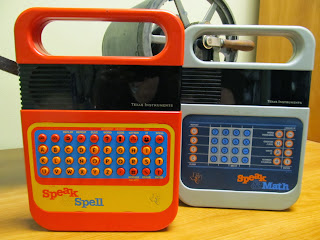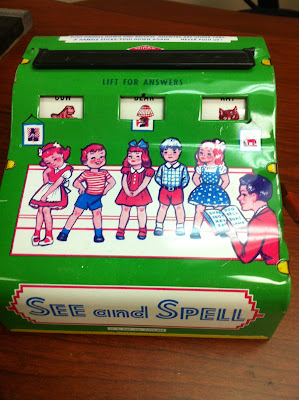There's the Speak N Spell from the 1970s which we remembered thanks to its role in the Toy Story Films. I have a complete post on Speak n Spell and I have both the Speak N Spell and the Math cousin who was usppose to teach the math facts.
 |
| Speak and Spell |
I also have a See and Spell. And I quote my See and Spell article: I haven't found a date on it but I'm guessing its post WWII, perhaps the 50s.
You get to spin the wheel and in each of the three windows, you can see a little picture. There are maybe ten rows, three each. The pictures are of baby, toy, dog, cat, boy, girl, bone etc
You look at the picture of the word, then you try to spell the word.
Finally you open the window to see how you did. Pretty exciting, huh?
 |
| See and Spell |
 |
| Spelling texts |
Should I add the original cover page of SpellingCity too? I guess I will. Here it is, circa
August 2009. (see the modern vocabularycity?)
And here's more info on the Speak N Spell and the Math N Spell
In terms of fun learning, here's more on The Phonics Game and other classics































